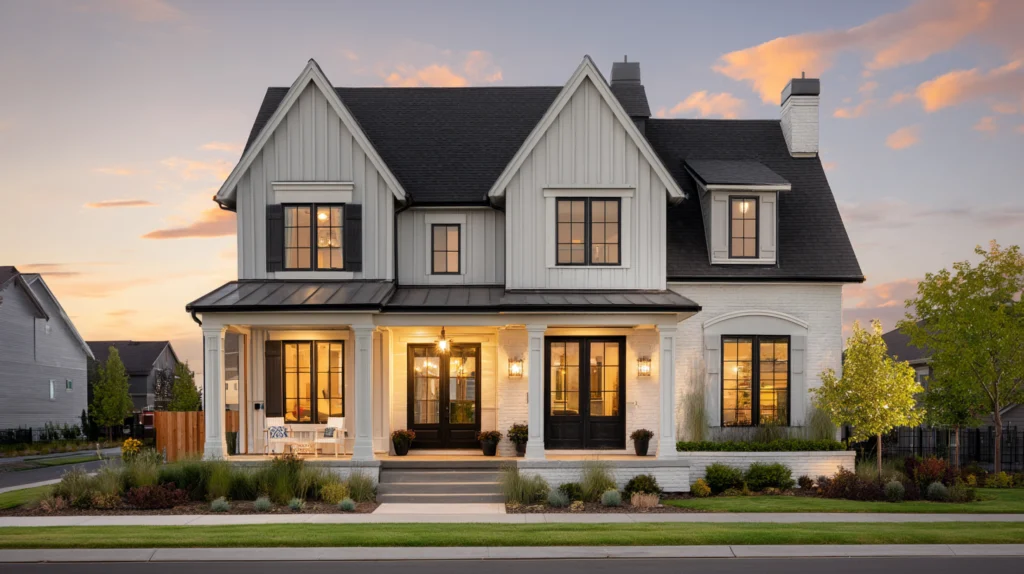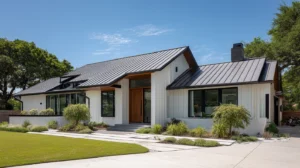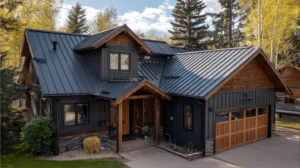When you are a homeowner in California in 2025, you will often face a major decision about roofing options. Metal roof vs shingle roof cost is one of the most important choices because it affects your long term value, durability, energy efficiency, and resale value. Many homeowners are drawn in by the cheaper initial cost of asphalt shingles, but they may overlook how metal roofing systems or a standing seam metal roof perform over decades. In this article, we compare metal roof cost vs shingle roof cost per square foot, maintenance costs, labor costs, roof replacement scenarios, roofing material longevity, and other key factors so you can decide what roofing option makes sense for your budget, home size, climate, and goals.
Metal Roof vs Shingle Roof Cost: Upfront Costs Per Square Foot
Asphalt Shingles Cost
Asphalt shingle roof material costs plus installation costs for traditional asphalt shingles tend to be much lower than metal roofing materials. Based on recent Cobex data and other authoritative sources, an asphalt shingle roof cost in 2025 ranges between $3.40 and $8.75 per square foot, depending on roof size, roof pitch, architectural shingles vs 3‑tab or luxury shingles, and complexity of the roof. Composite shingles cost more than basic asphalt but offer enhanced aesthetics and durability.
Shingles cost less because the roofing material is easier to source, the labor is more common, and installation is faster. Asphalt shingle installation tends to require less specialized work compared to metal roof installation, so labor costs are lower. However, complex roof designs can increase installation time, making labor costs higher.
Metal Roof Cost Per Square Foot
Metal roofing materials cost considerably more per square foot because of higher material costs, labor costs, specialized installation, and sometimes premium metal types. A standing seam metal roof or other premium styles may cost between $8 and $14 per square foot or more depending on the metal type, such as steel, aluminum, copper, or zinc. Lower cost metal roofing materials might start around $4‑$6 per square foot, but for full metal roofing systems including underlayment and proper flashing and finishing, you should expect higher.
For a same roof size of 2,000 square foot roof, the difference between shingle roofs and a standing seam metal roof or other metal roof types can be tens of thousands of dollars just for initial cost, installation, and material.
What Drives the Difference in Initial Cost
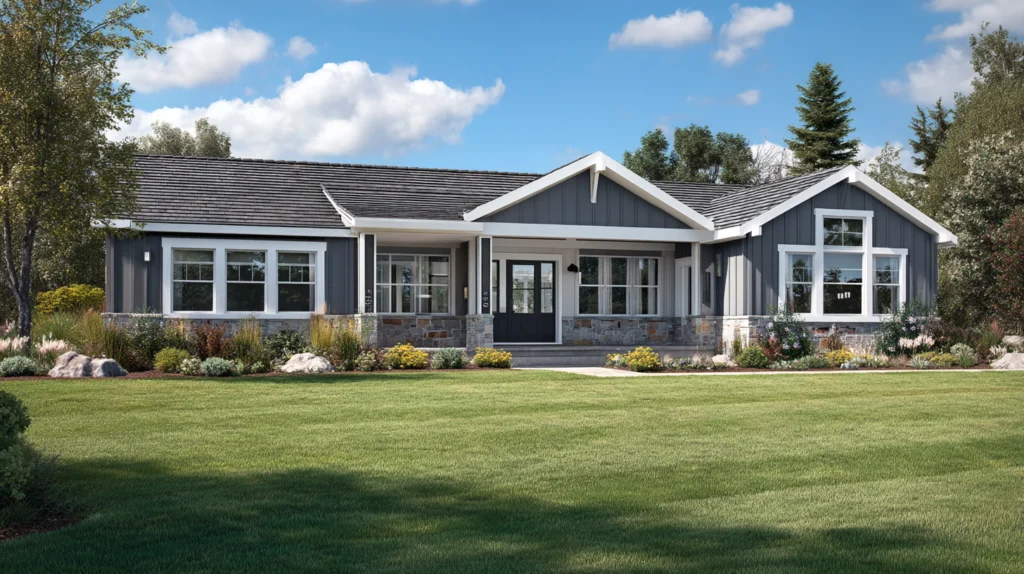
Several factors cause metal roof cost to be higher than shingle roof cost initially. Understanding those will help you compare apples to apples.
Roofing Material Type
Roofing material type plays a big role. Traditional asphalt shingles are typically cheaper material costs vs luxury shingles or architectural shingles. Wood shingles and slate shingles are premium options that can significantly increase cost but offer unique aesthetics and durability. On the metal side, types like standing seam metal roof or premium metals like zinc, copper, or even stone-coated steel add to material costs.
Labor Costs and Installation Process
Metal roof installation is more labor intensive because installers must handle specialized panels, seams, exposed or concealed fasteners, underlayment, and more precise flashing. Standing seam roofs often require more skill and more time. This increases labor costs compared with asphalt shingle installation. Roof pitch or roof complexity also increases labor costs, so a steep roof or many angles or valleys will raise cost per square foot significantly. Removal of old roofing material or full roof replacement adds cost.
Material Quality and Premium Features
If you choose architectural shingles or luxury shingles for the shingle roof, or select premium metals or finishes for metal roofing materials, such as copper or zinc or high-end coatings, you will see higher material costs. Also, selecting features like exposed fastener vs hidden fastener systems, higher gauge metal, energy efficient coatings, or recycled materials increases cost.
Lifespan, Maintenance, Energy Efficiency, and Long Term Value
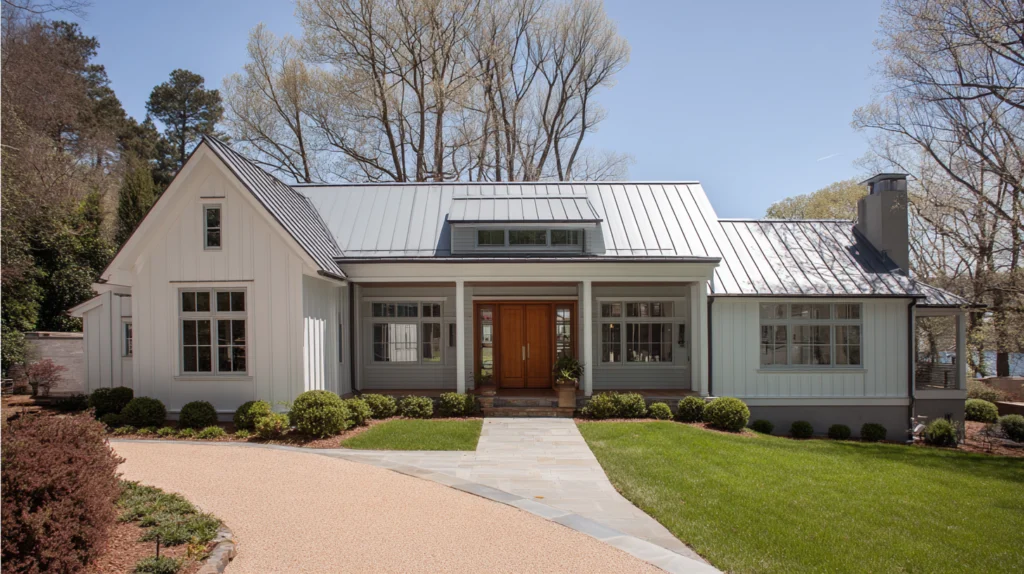
Lifespan of Asphalt Shingle Roof vs Metal Roofing Systems
Asphalt shingles are durable, but they have a shorter roof’s lifespan compared with metal roofing systems. In many regions, an asphalt shingle roof will last 15‑30 years depending on quality of shingles, weather conditions, and maintenance. A metal roof, including a standing seam metal roof properly installed and properly maintained, may last 40‑70 years or more, some premium metals even up to 100 years in favorable conditions. That means fewer replacements and less frequent roof replacement over your lifetime, which helps offset higher upfront cost.
Maintenance Costs and Repair Frequency
Shingle roofs often require more frequent repairs and replacement sooner than metal roofs. Maintenance costs are higher over time because asphalt shingles tend to suffer more damage from UV exposure, granule loss, curling, cracking, and damage in extreme weather. Asphalt roofing often means more frequent repairs. Metal roofs, on the other hand, have minimal maintenance and less maintenance is needed overall. They are more resistant to fire, high winds, hail, and require fewer repairs. Repair costs may be higher when they do occur, but they happen far less often.
Energy Efficiency and Climate Impacts
Metal roofing generally offers better energy efficiency compared with asphalt shingles. Metal roofs reflect more sunlight, reduce heat absorption, and help lower cooling costs in hot climates such as many parts of California. Asphalt shingles absorb heat, especially dark colored ones, which increases cooling load in warm weather. That increases energy costs, including higher heating costs in some climates. Some metal roofing systems with reflective coatings can provide significantly higher performance and long term savings in cooling.
Resale Value and Curb Appeal
A metal roof can provide a higher resale value because buyers recognize long term value, durability, energy efficiency, and low maintenance. Some studies show metal roofs increase resale value more compared with asphalt shingle roof replacements. Metal also comes in modern profiles and styles like standing seam roofs or metal slate that enhance curb appeal. Shingle roofs remain a more traditional look which many homeowners prefer. Architectural shingles add variety but often do not match the long term prestige of some metal roof types. In the real estate market, metal roofs often command a premium due to their exceptional durability and longevity.
Real Roof Replacement Scenarios Comparing Total Cost
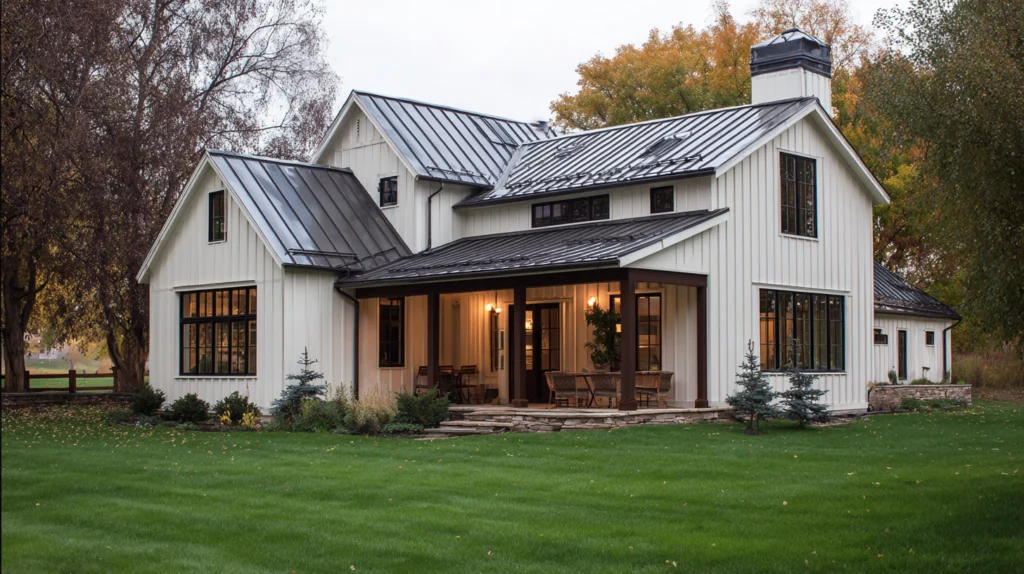
Example: Same Roof Size, Asphalt vs Metal
Imagine replacing a roof on a 2,000 square foot home. Choosing an asphalt shingle roof vs a metal roof, the comparison might look like this. If the shingle roofs option costs about $6,000‑$12,000 for materials, installation, and labor using standard asphalt shingles, this covers initial cost. For a comparable standing seam metal roof or premium metal roofing materials, you could expect $18,000‑$32,000 or more depending on metal type, finish, and installation complexity. Over 40 to 70 years, you might replace the asphalt shingle roof once or twice, while the metal roof would avoid multiple full roof replacements. That means even though shingle roofs are cheaper initially, the long term cost of multiple replacements raises their total cost significantly.
Hidden Costs in Replacement
Roof replacement includes removing the existing roofing material, disposal cost, structural repairs if the roof deck is damaged, ventilation or code upgrades, and underlayment upgrades. Permit costs also factor in. These hidden costs increase installation costs beyond simply material costs. Metal roofing replacement may require full tear off and proper flashing and sealing, which adds to cost vs overlay style shingle replacement.
When Asphalt Shingle Roof Makes Sense vs When Metal Roof is Better
When Choosing Shingle Roof is More Cost Effective
Many homeowners pick an asphalt shingle roof because it has cheaper initially cost, lower material costs, lower labor costs, and lower installation costs if the roof is simple, roof size and slope not complex. If you are planning to sell within 5‑10 years, or you have short term stay or limited budget, shingle roofs or traditional asphalt shingles may be the right roofing option. Choosing architectural shingles may improve performance and curb appeal, but will increase cost compared to standard asphalt shingles.
When Metal Roof is Worth Higher Upfront Cost
A metal roof cost may be higher upfront, but for long term value, low maintenance, durability, energy efficiency, resistance to fire and extreme weather, a standing seam metal roof or other high quality metal roof types may pay off, especially if you plan to live in the home for many years. In regions with hot climates, high winds, risk of wildfire, or frequent storms, metal roofing systems offer better protection and long term savings. Also, metal roof installation with reflective coatings or energy efficient metal roofing materials may reduce heating and cooling costs significantly. Metal roofs are popular not only for residential but also for industrial buildings due to their exceptional durability.
Comparing Metal Roof Cost vs Shingle Roof Cost Over Time
If you do a lifecycle cost comparison for metal and shingle roofs, taking into account roof replacement frequency, maintenance costs, energy savings, and potential resale value, the picture often shifts in favor of metal.
For example, over 50 years, a metal roofing system may only need one major roof replacement or none depending on material type, while shingle roofs may need two or even three replacements. Even though each asphalt shingle roof replacement is cheaper in initial cost per square foot, the cumulative costs of labor costs, material costs, disposal, and tear off add up. Also, energy efficiency savings and minimal upkeep help you save money. Low maintenance and fewer replacements means lower total cost of ownership.
Other Considerations: Roofing Options Specifics
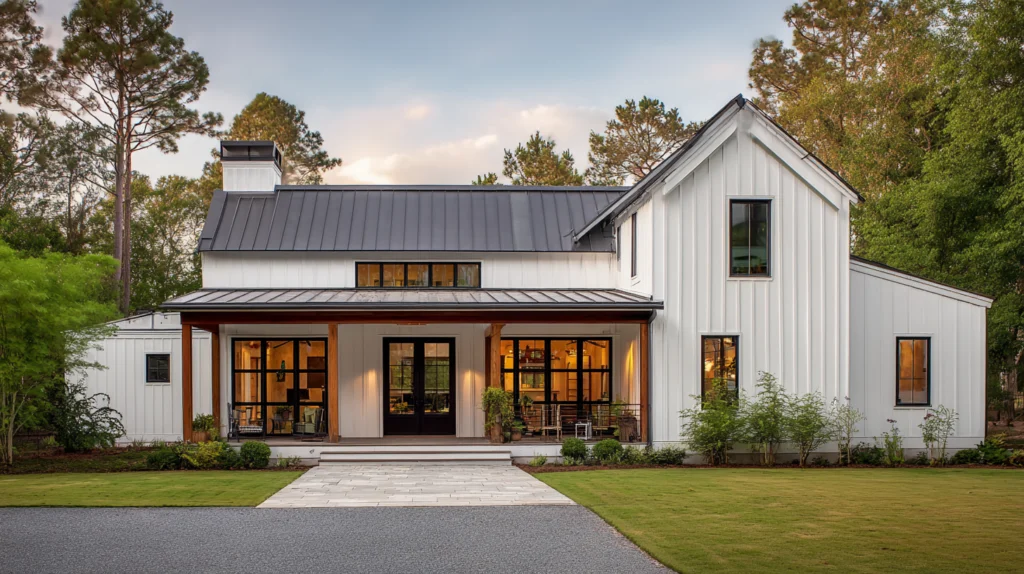
Standing Seam Metal Roof Specifics
Standing seam metal roof profiles conceal fasteners. Exposed fasteners vs hidden fasteners under seams affect cost. Standing seam roofs often cost more than exposed fastener metal roofing because of more specialized installation and materials. But their durability and aesthetic value often justify the higher investment. Standing seam metal roof is often more expensive per square foot than simpler corrugated or exposed fastener styles.
Architectural Shingles and Luxury Shingles vs Traditional Shingles
Upgrading from traditional asphalt shingles to architectural shingles or even luxury shingles increases initial cost per square foot. Higher material costs, better aesthetics, more dimensional appearance, and better wind and impact performance come with the upgrade. Many homeowners find architectural shingles a good middle ground between initial cost and long term value.
Roof Pitch, Roof Complexity, and Local Labor
Roof pitch, steep slope, and roof complexity increase labor costs, installation difficulty, and material waste, making both shingle roof cost and metal roof cost higher. Local labor rates are variable across California and among roofing contractors. Pricing may differ widely depending on experience, reputation, warranty inclusion, and how many crews are available.
Frequently Asked Metal Roof Cost vs Shingle Roof Cost Questions
Are metal roofs noisy when it rains?
Metal roofs may create more noise during heavy rain or hail compared to asphalt shingles, especially if underlayment or attic insulation is minimal, but properly installed metal roof types typically include insulation and design that reduce noise. Many homeowners report that once properly installed, noise is no more of an issue than with shingle roofs.
Can a metal roof be installed over existing asphalt shingles?
In many jurisdictions, if local code allows and if the existing asphalt shingle roof is in good condition, overlay over shingles may be possible. However, it depends on roof structure, roofing contractor evaluation, roofing inspection, and requirements. Full tear off often gives better results, particularly for metal roof installation to ensure proper sealing, flashing, and warranty.
Does metal roofing attract lightning or is it safer?
Metal roof types do not attract lightning. They are not more likely to be struck. Metal just conducts electricity safely to the grounding systems, and if properly installed, metal roof can be safer than some roofing materials in certain cases.
Which roof type has better fire resistance?
Metal roof generally has Class A fire rating when using appropriate materials and installation. Architectural shingles may achieve fire resistance but usually not as high as metal types in wildfire prone areas.
Do metal roofs dent easily?
Some metal roof types such as aluminum or thinner gauge metals may dent under impact, hail, or falling debris, whereas thicker steel, copper, or zinc metals have more resistance. Architectural shingles and luxury shingles may be more resistant than basic shingles, but still more prone to damage.
Final Thoughts: Making the Right Roofing Decision
When comparing metal roof cost vs shingle roof cost, remember that while an asphalt shingle roof may be cheaper initially, it often does not deliver the same long term value, low maintenance, energy efficiency, durability, or resale return. On the other hand, selecting metal roofing systems or a standing seam metal roof may cost more per square foot up front, but you gain fewer replacements over your lifetime, less frequent repairs, and savings in repair and energy costs. Consider your roof size, roof complexity, local labor rates, roof pitch, and your long term plans for your home. If you plan to stay in your house many years, invest in a high quality metal roof. If you intend to move soon or budget is tight, a good asphalt shingle installation with architectural shingles may be sufficient.
Call to Action
If you are considering a roofing project and want an accurate quote for your specific roof size, roof pitch, and material preference, contact Cobex Construction Group. We can help you compare metal vs shingle roofing systems, walk you through metal roof cost, metal roof installation, architectural shingles, and show you energy efficiency benefits and long term cost savings. Let Cobex give you a free estimate and help you choose the roofing option that fits your budget and long term value.
